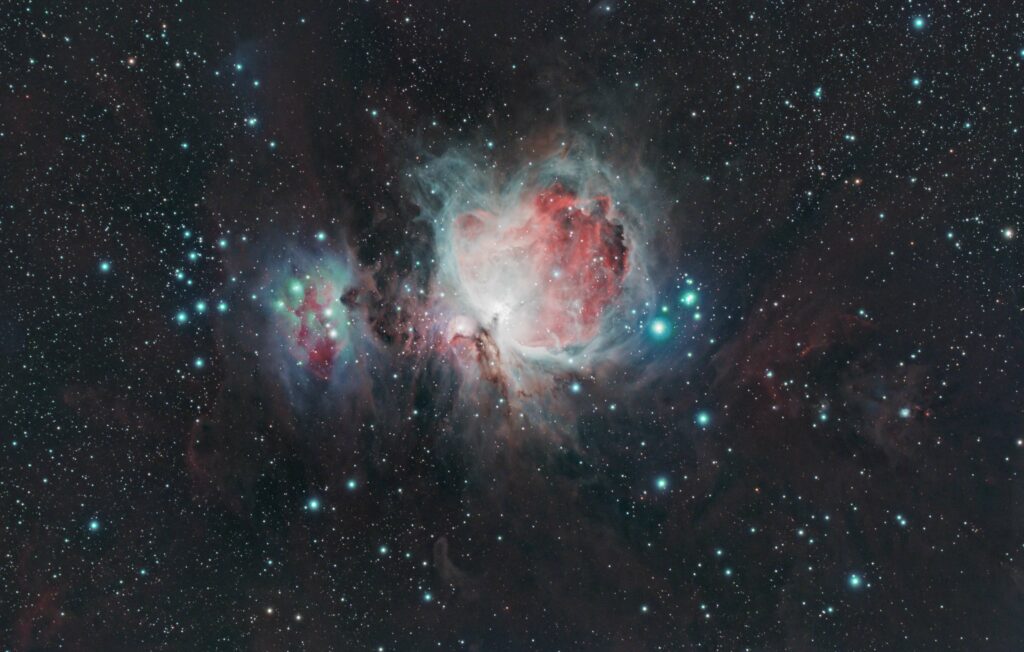
Imaging with multi-band filters
Imaging expert Gary Palmer looks at eight of the latest filters and how they perform when it comes to capturing faint and pleasing nebula detail
Over the last few years there has been an explosion of multi-band filters for astrophotographers. Used with a colour astro camera, they help to combat light pollution and make it easier to image deep-sky targets from cities. Compared to mono cameras, one-shot colour cameras also help in this regard as they save time imaging. Combining data captured with a multi-band filter and with a standard light-pollution filter allows some good creativity when it comes to processing; the colour can be changed, and stars moved from one image to another to give some very impressive results.
Here we have examined a selection of multi-band filters to look at the differences in the wavelength of light they let pass through to the camera sensor. There are dual-band filters, which mainly pass the light emission from ionised hydrogen alpha (Ha) and oxygen III (OIII) (though some are now passing sulphur II (SII) and OIII emission), which can enhance the detail within nebulae. There are tri-band filters too, which generally have the addition of passing hydrogen beta emission, useful for adding detail to areas that contain OIII.
The target we chose to image with the eight filters was the Orion Nebula; it has a good mix of gases to image and, in the outer areas beyond the Trapezium, great detail which is harder to capture with standard light-pollution filters. For each multi-band filter, we captured 40x 180-second exposures, processing this with a full set of calibration frames in PixInsight. Further processing was limited to noise control and gentle stretching, but no colour calibration, as we wanted to show what each filter produced.
Optolong L-Ultimate dual-band 3nm filter
2-inch, £389
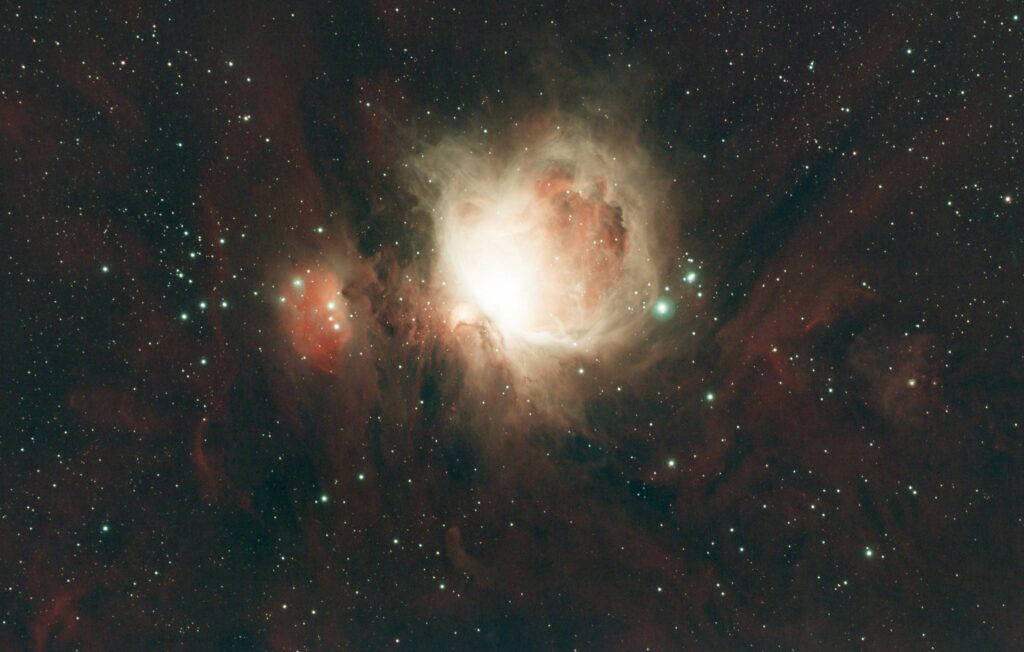
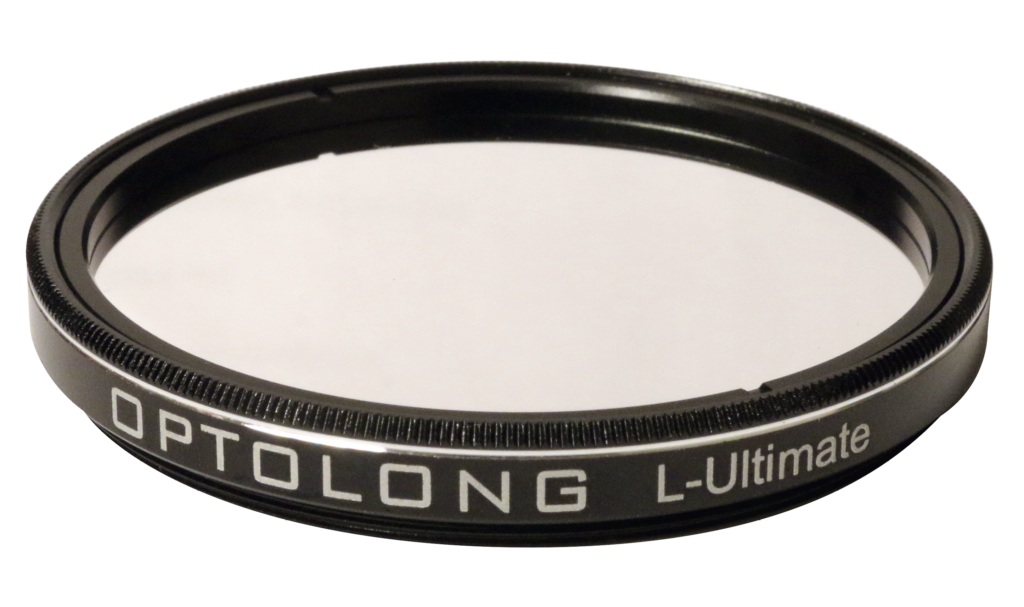
Released late last year, the L-Ultimate is one of the newer filters on the market and at the moment is only available in a 2-inch diameter. It’s a dual-band filter aimed at Ha and OIII, letting both wavelengths through with a bandpass of 3nm. Its main advantage is its tight emission lines (OIII at 500.7nm and Ha at 656.3nm), making it possible to image in heavily light-polluted areas. It will help bring out more detail at these specific wavelengths, but it isn’t suitable for faster setups, being best-suited to focal ratios of f/4 and above.
For the test image on the left it gave really good results in Ha; the structural detail in the background was well-defined for a relatively short amount of capture time. There are a few halos around the brighter stars which can be reduced by lowering the gain or ISO. With more time spent capturing exposures, the filter would produce better results in both Ha and OIII, enhancing more detail around the Running Man Nebula.
► More details at bit.ly/LUltimate
Optolong L-eXtreme dual-band 7nm filter
1.25-inch, £169; 2-inch, £239
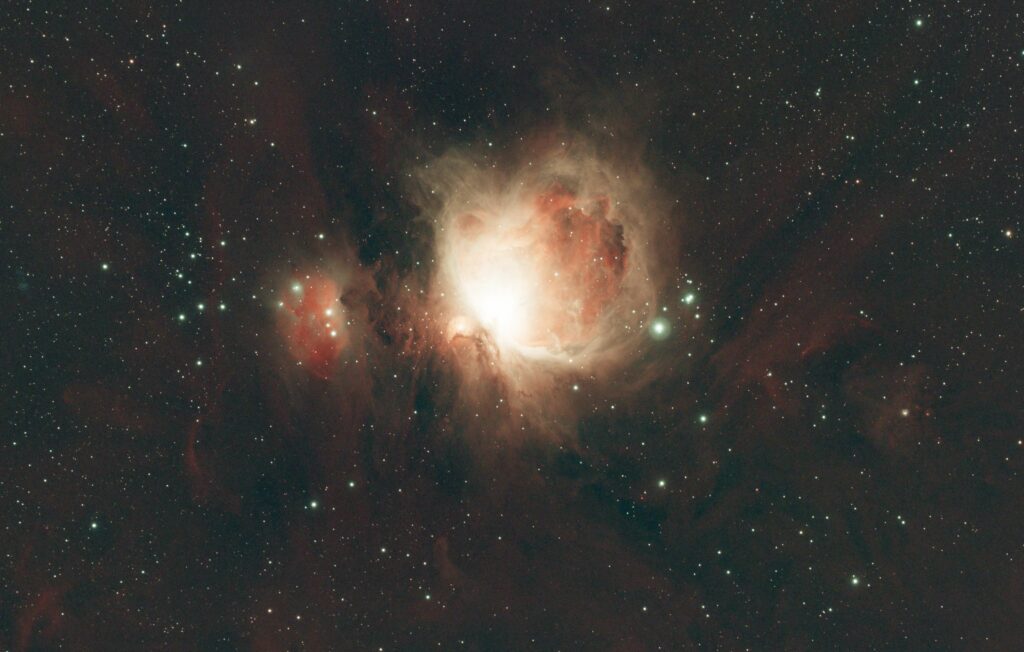
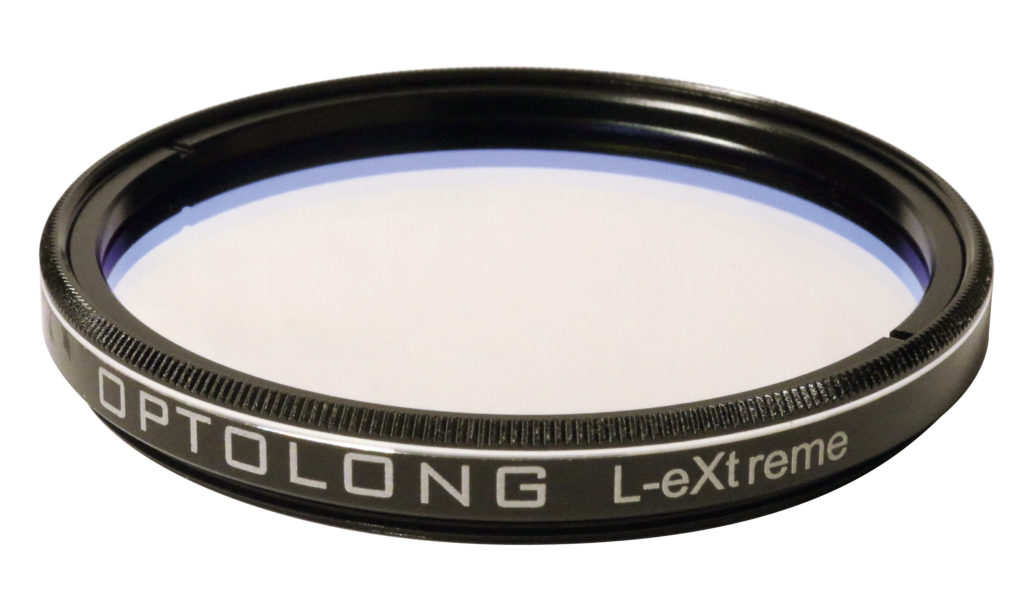
Optolong’s L-eXtreme filter has a 7nm bandpass on both its Ha and OIII wavelengths, making it suitable for faster imaging setups. Having a tight bandpass at both wavelengths makes it suitable for light-polluted areas, blocking out most light pollution. Results are very similar to other filters in the Optolong range, but at the 7nm bandpass it would take longer to capture the same amount of detail in the image (though this will vary depending on the speed of the optical system).
While there is some haloing in OIII around the brighter stars, most of the smaller stars are very good. Detail in the background structures is very nice, though it will take more time to achieve more detail in the Running Man Nebula. On a cost basis it is very wellpriced, so would make a good addition to most imaging systems you might have. The filter comes in 1.25-inch and 2-inch diameter formats and can be used with DSLR cameras as well as CMOS and CCD mono or colour astro cameras.
►More details at bit.ly/LeXtreme
Optolong L-eNhance tri-band filter
1.25-inch, £129; 2-inch, £166; Canon EOS-C clip-in, £229
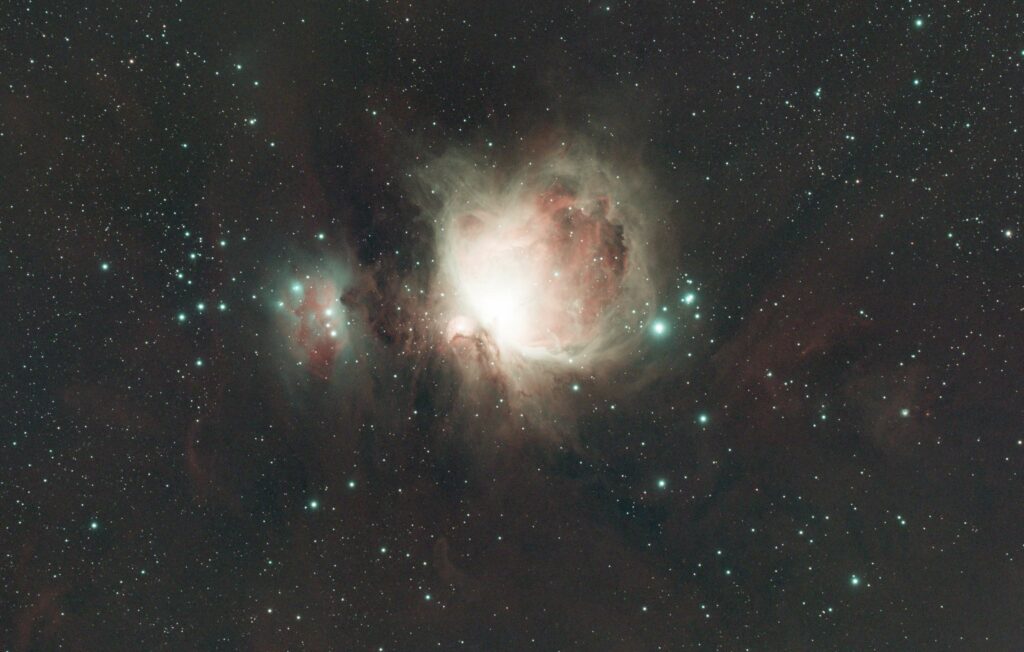
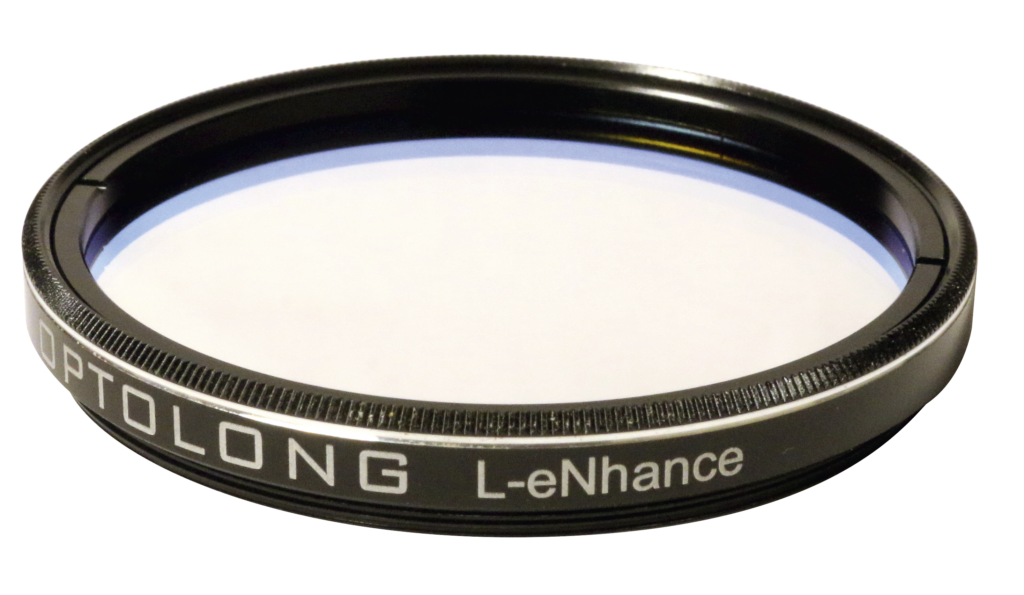
Optolong’s L-eNhance filter is a tri-band filter that passes Ha, hydrogen beta (H-beta) and OIII wavelengths, giving it a somewhat wider bandwidth coverage than other filters. It’s been around for quite some time now, but is still a really effective filter to use. With the addition of Hb the L-eNhance gives a good amount of data on targets in a short amount of time, with nearly any optical system. The structural detail in the background is a little softer than some filters, but this will improve with longer exposure runs.
There’s a lot of detail in the OIII areas of the test image and the Running Man Nebula is well-defined. The stars are not as tight as with some of the other filters, but this can be caused by high cloud. For combatting light pollution it is one of the least expensive filters here, making it a good addition for anyone on a tighter budget. The L-eNhance is available in 1.25-inch and 2-inch diameters for astro cameras, and as a clip-in for Canon EOS-C DSLR cameras.
►More details at bit.ly/LeNhance
Antlia ALP-T dual-band 5nm filter
2-inch, £393
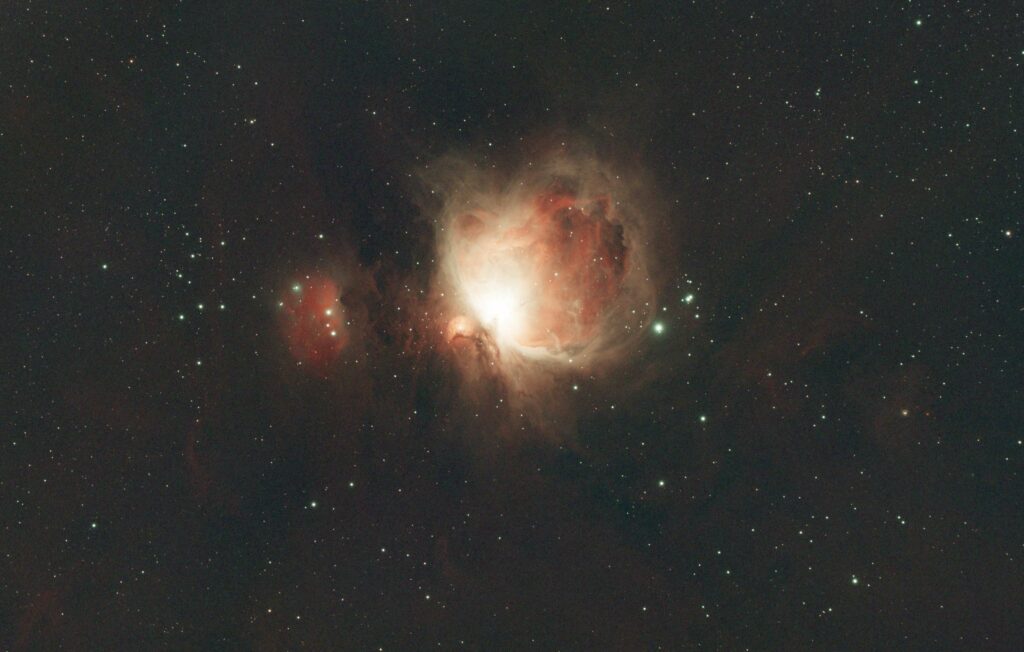
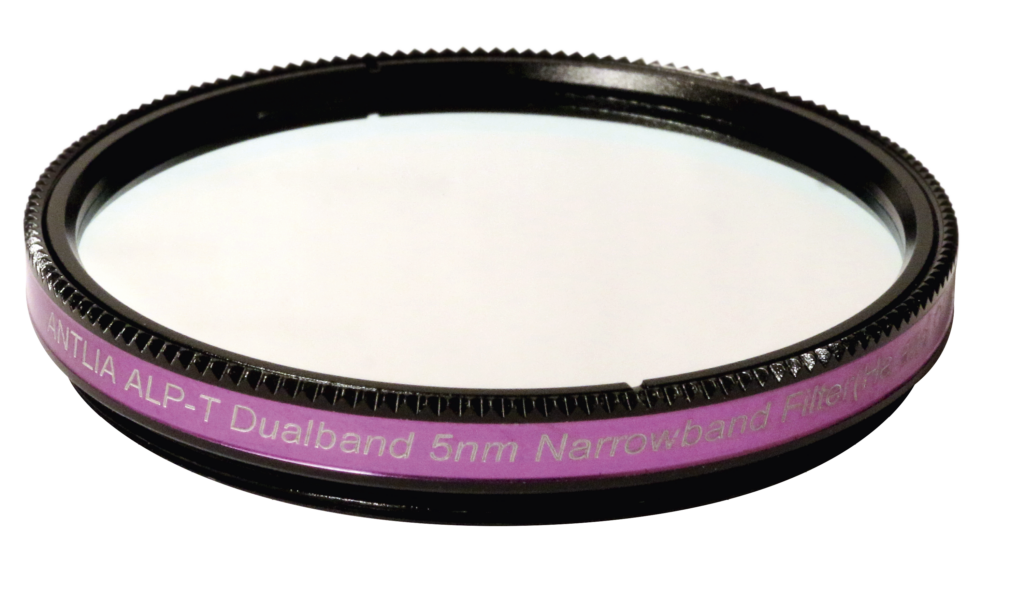
Antlia’s ALP-T filter comes in 2-inch diameter and also in an unmounted format, and is not to be confused with the Highspeed 5nm version that’s also available. It’s a dual-band filter with a 5nm bandpass that’s best suited to optical systems above f/4. The two wavelengths it passes are focused on Ha and OIII, with the OIII running slightly tighter at 500.7nm. While structural detail is there in the background of the test image, it is very subtle in Ha.
Taking a closer look we can see that the halos around brighter stars are controlled very well. There is unfortunately a real lack of OIII data, which seems to be held back quite a bit. The Running Man Nebula is not well-defined and this will mean that longer exposure runs won’t be a great help: adding more exposures will not bring out more OIII if it’s not passing through to the sensor. Running the filter on some other targets showed an equally big drop in OIII, compared to other filters.
►More details at bit.ly/ALPTfilter
Antlia Triband RGB Ultra filter
2-inch, £205
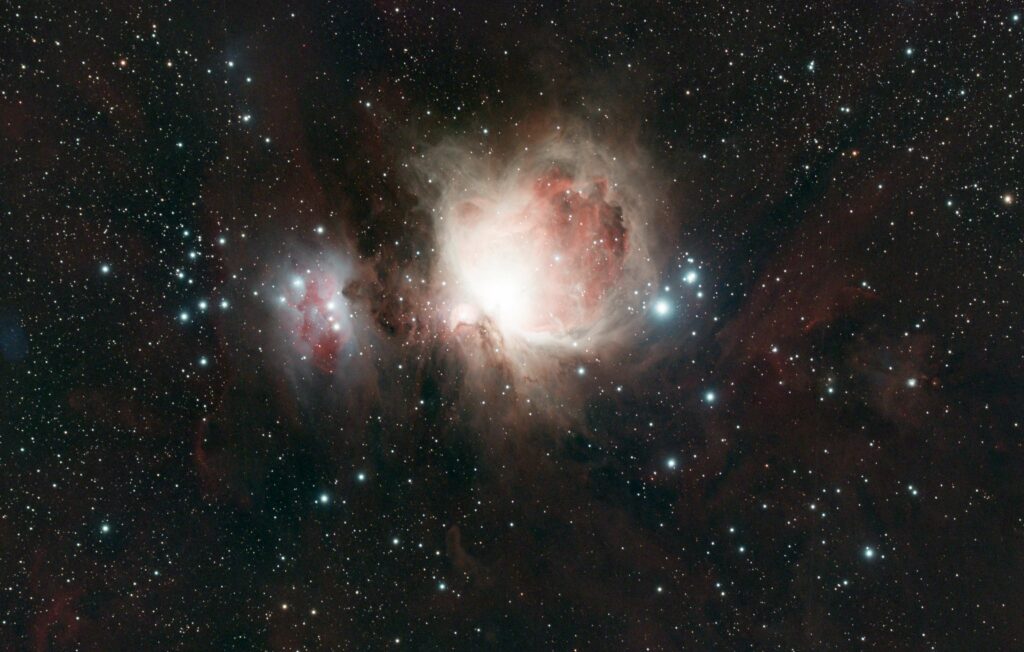
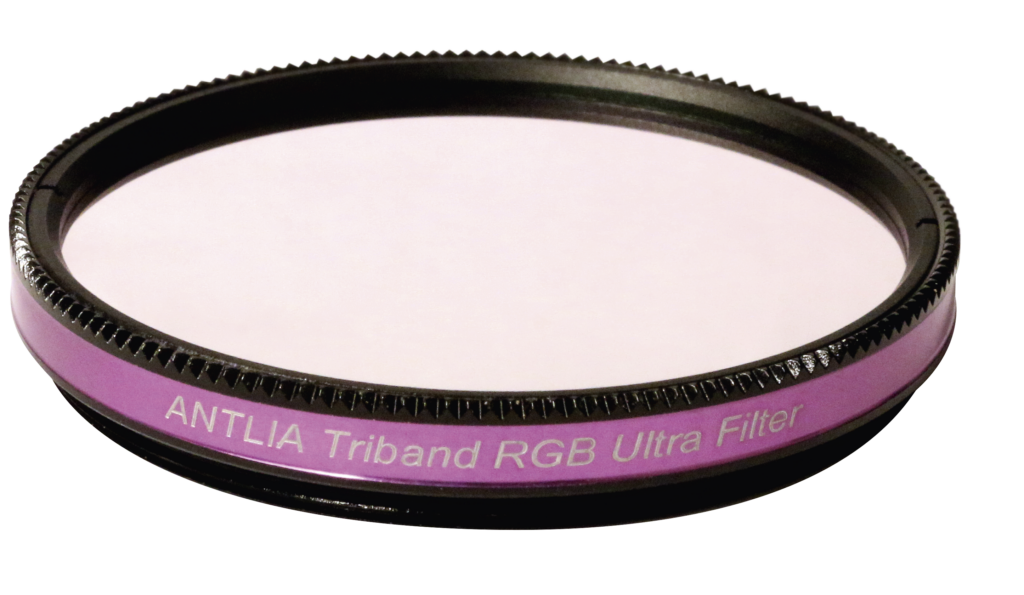
The Triband RGB Ultra Filter is another new filter released in late 2022. What makes it unusual is the combination of transmission lines to create a natural blue in the images it captures. Most dualor tri-band filters give quite a heavy green in the image, which takes a bit of work when processing to make look more natural. Also unlike the other filters that concentrate on emission nebulae, this filter is able to image other deep-sky objects like galaxies and star clusters. It passes Ha, SII, OIII and nitrogen II (NII); Ha at 656.3nm, SII at 671.6nm to 672.4nm, OIII at 495.9nm to 500.7nm, and NII 654.8nm to 658.3nm.
When we look at the test image, we can see Antlia’s clever techniques in its coating process which maximise the blue channel. Structural detail in the Running Man Nebula and the background of the image are very good, so playing around with gain and ISO settings will produce some very nice results. Testing on several galaxies showed that it is a very capable filter. It’s also available at a reasonable price.
►More details at bit.ly/TribandRBGfilter
IDAS NBZ dual-band 12nm filter
48mm, £275; 52mm, £298
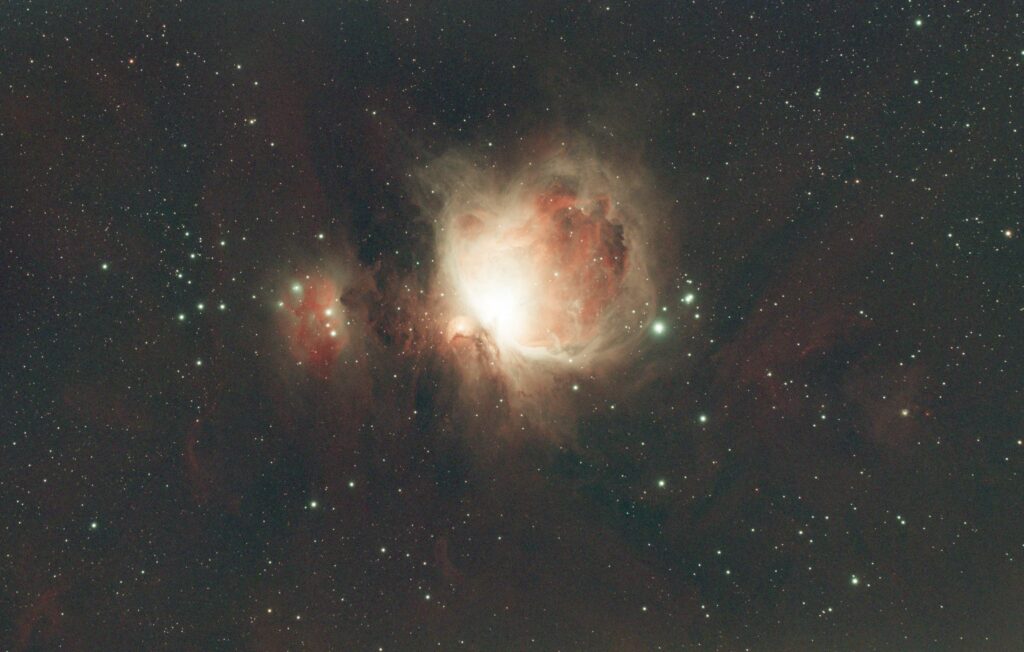
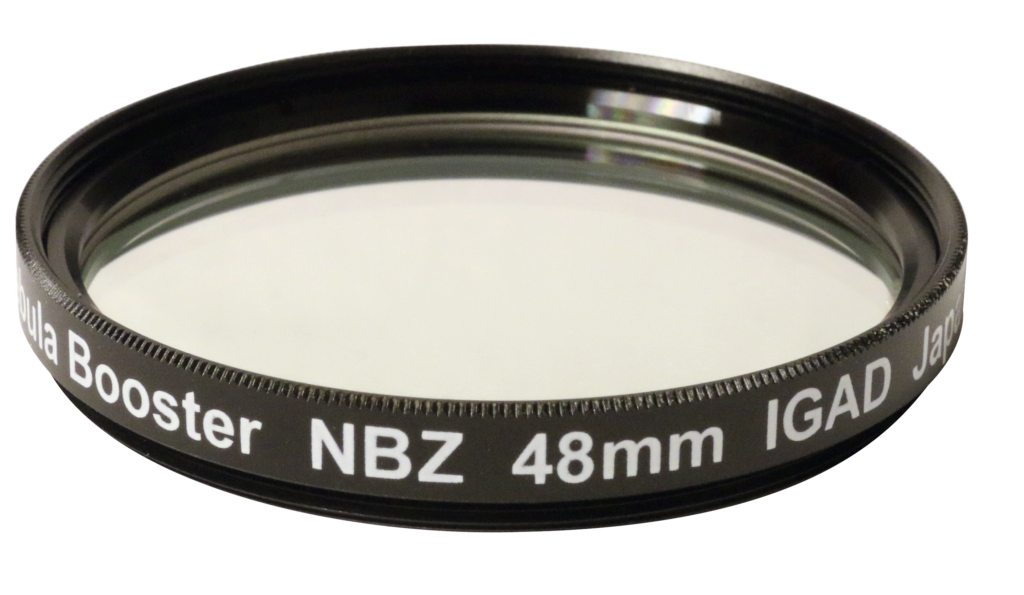
The IDAS NBZ filter is a dual-band nebula booster filter that passes Ha and OIII, both with quite a wide bandpass of 12nm. While this will help reduce halos, it also makes the filter more usable on faster optical systems from f/4 down to f/2. OIII emission passes at 495.9nm and 500.7nm, and Ha at 656.3nm. While slightly outside the optical system we used, on an f/2 system, it would deliver a good amount of detail in a short amount of time and, with the coatings used, it will produce very good contrast.
Looking at the test image, it is a little softer than some other filters. The Running Man Nebula is starting to build some definition and the background detail is a little noisier, but that would improve with some more exposures. For users of faster systems, the NBZ is very well-priced compared to other filters in this area. It is also available in an even faster format for ultra-fast imaging systems.
► More details at bit.ly/IDASnbz
Askar Colour Magic 6nm dual-band filter (OIII + Ha)
2-inch, £320
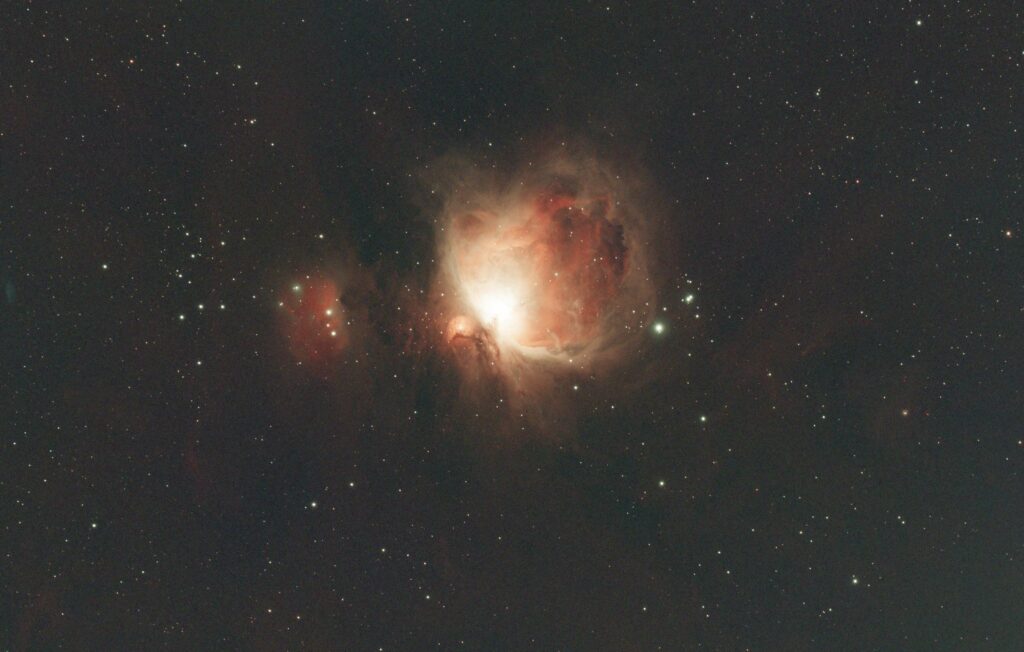
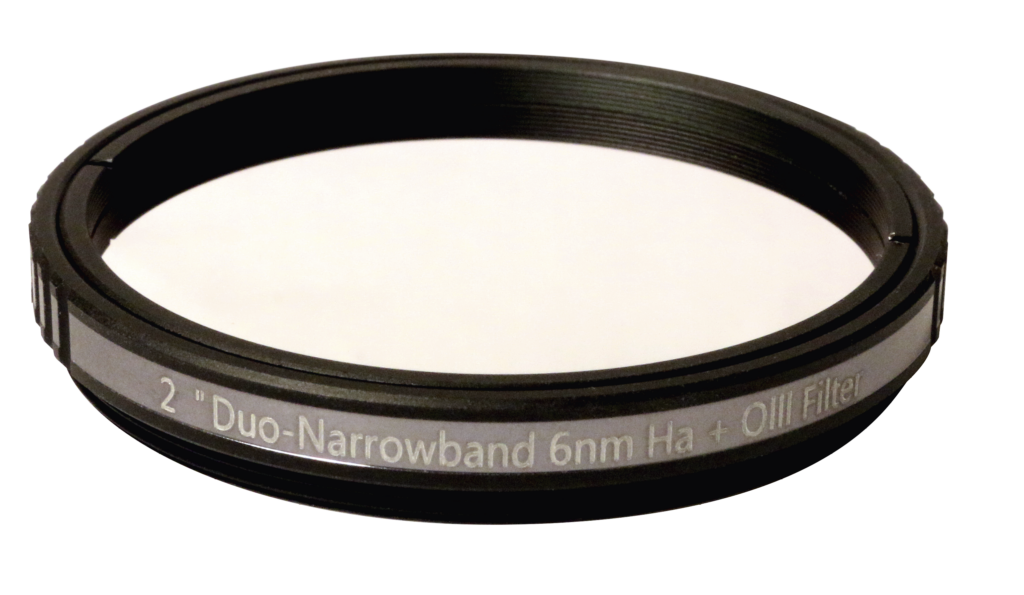
Askar is one of the newer manufactures to the filter market. This 2-inch diameter Colour Magic is a dualband filter that passes Ha at 656.3nm and OIII at 500.7nm, both with a 6nm bandpass. One of its main claims is that it produces no halos around stars. Looking at the test image, it is not as detailed as some other filters. There is a lot of OIII lacking and the Running Man Nebula is not that well-defined.
The image does show decent Ha data, but it is not a stunning amount in the background and still quite noisy. Targets will need more exposure time to achieve good results. There is little to no fringing around the stars in the image, but the absence of halos has come at the cost of OIII data, suggesting there is an issue in the way the wavelength is coming through the filter to the sensor.
►More details at bit.ly/AskarO3Hafilter
Askar Colour Magic 6nm dual-band filter (SII + OIII)
2-inch, £320
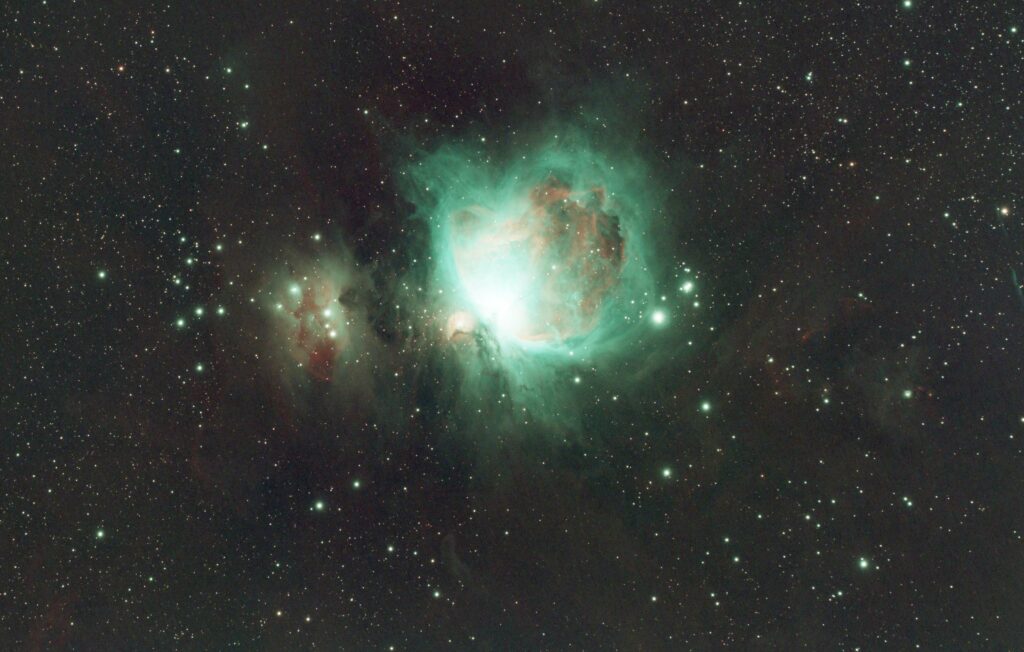
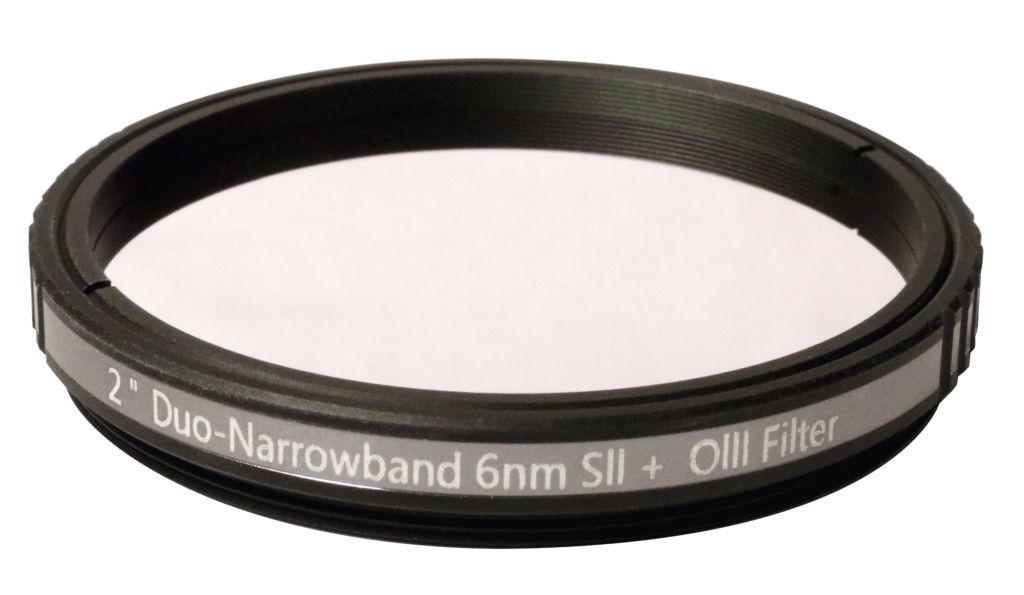
Askar launched its second dual-band filter in late 2022, with a change to the wavelengths it allows through. It passes OIII at 500.7nm and SII at 671nm, both with a 6nm bandpass, which gives interesting results in the captured image. SII is normally found in quad- or tri-band filters, making it hard to separate the wavelength from Ha when processing. Indeed, combining data from this filter with separate Ha-filtered data would enable a good variation in colour palettes in later processing.
Looking at our test image, we can see there is a decent amount of data at OIII and SII. In OIII there is plenty of detail available to work with, and nice amounts of SII are in the image as well. Looking at the abundance of OIII in this image compared to its sister filter, the OIII + Ha (and other filters tested here), our previous note about star halos in the images appears to be backed up: it seems that in the pursuit of reducing halos there is a reduction in the amount of OIII visible in quite a few of the images.
►More details at bit.ly/AskarS2O3filter
Working with multi-band filters
Here’s how to include the filters in your imaging setup
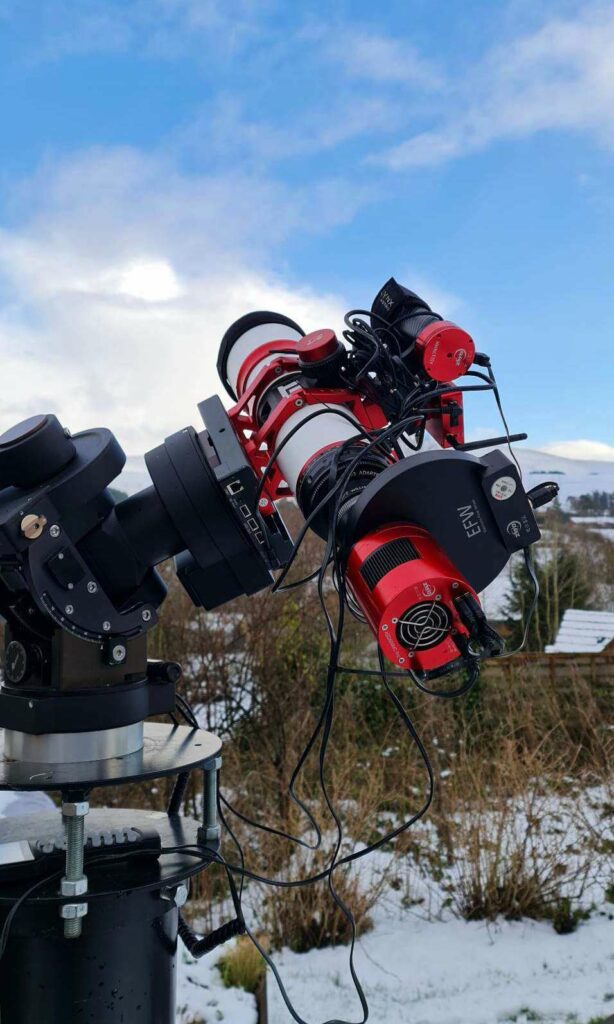
Multi-band filters can be used with most astro cameras on the market and are very easy to get to grips with. Lots of telescopes have a filter holder inside the focuser, where the filters are fitted. If this is not available, a filter drawer is a good addition to make life easier. Filters can then be mounted inside and placed in the imaging train near the camera. Extra drawers can be purchased for other filters, making it simple to change them when needed.
Dust and rotation are problems we have when changing filters manually, for example if you have multiple filters for different objects. A filter wheel is the simplest solution. All the filters can be loaded inside and then in capture-control software each filter can be individually selected. The filter wheel is fitted on or near the front of the camera in order to cut down on optical problems and reflections. It is also a great way to keep the filters safe and stored when not being used.
On our imaging setup, the filters were loaded into a ZWO filter wheel on our ZWO ASI2600MC Pro astro camera, controlled with a ZWO ASiair Plus unit. The telescope we used was a William Optics GT81 WIFD, mounted on a iOptron CEM70 mount.

Gary Palmer is an astro imaging expert and the assistant director of the BAA’s Technical section.